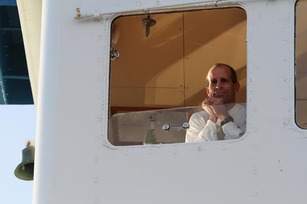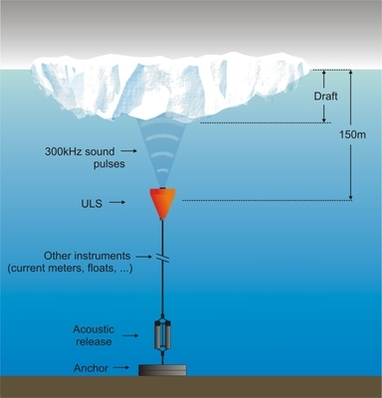 With 24 blog posts in some stage of drafting but not published since my last one in 2013, 2014 has obviously been a banner year for "Chris Horvat's Blog". Hopefully the coming months will reinvigorate my once-unfettered interest in completion. From July 3-30, I'll be a member of the science team aboard the USCGC Healy (above), on research mission HLY1402. My participation will be in support of (and owed to the generosity of) Dr. Bob Pickart. (that's him on the right). This mission will support our understanding of the interaction of waters spanning continental shelves... but that's a very different post. Our mission will take us from Unalaska, AK through the Bering Strait and out into the Beaufort Sea. Needless to say, as a sea ice researcher I'm a bit excited. Currently I'm in Anchorage, AK, waiting for my flight tomorrow to Dutch Harbor, of "Deadliest Catch" fame. The title of this cruise is "Mooring Deployment", which means that the broad goal of the mission is, well, to deploy moorings, long buoyed cables fixed to the seafloor. These contain arrays of measurement devices which measure water properties like temperature, salinity, velocity, and sometimes chemical properties.  Generally, a mooring has four components parts:
Most moorings are also fitted with an "acoustic release" mechanism: since they move and sway with the ocean currents, it isn't clear exactly where a mooring is. So when scientists want to retrieve data captured by the mooring, they cruise around it and send an acoustic pulse into the deep. Upon hearing this coded message, a clasp at the base of the mooring releases the cable and float from the anchor, and the mooring bobs to the surface to be recaptured. On the left is an example of one typical types of mooring which is deployed in ice-covered regions. Did I mention we'll be in ice-covered regions? Most Arctic mooring work is done when there is no ice, since when moorings are deployed ice can close in on mooring lines and snap them. Unluckily for the science party (but happily for me), we have to do this mission in July, when there will still be sea ice in the Bering Strait and Alaskan Arctic! Comments are closed.
|
AuthorOceanographer, Mathemagician, and Interested Party Archives
March 2017
Categories
All
|

 RSS Feed
RSS Feed
